Vegetables to plant in November: 12 crops to sow and grow this month
Discover the best vegetables to plant in November, including early chilies, asparagus, horseradish and oyster plants

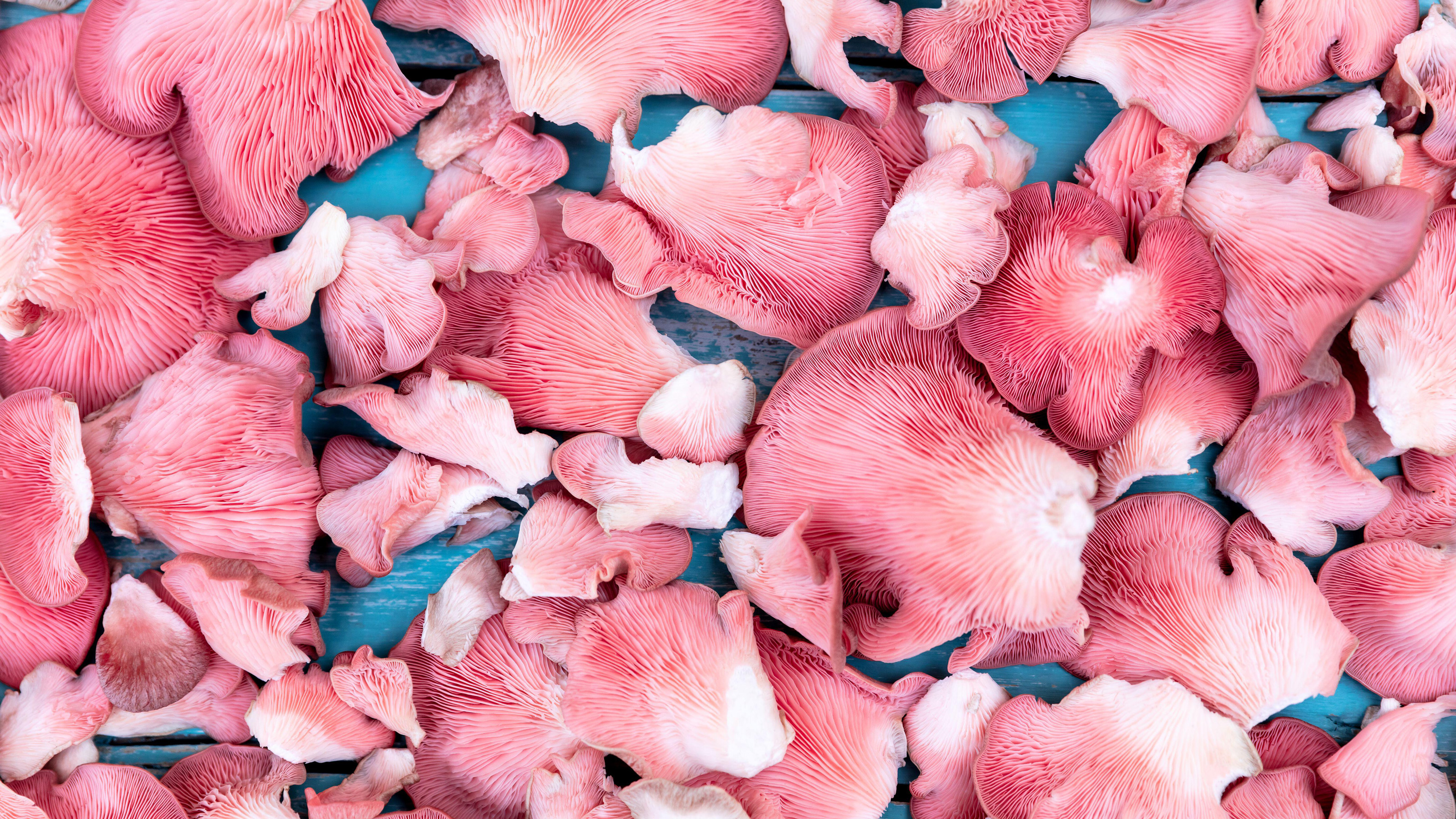
Contemplating vegetables to plant in November? You may be thinking it’s a low-key time for sowing and planting – well, think again! The weather may be dipping, but plenty of crops actually prefer to burst forth in the heart of winter. Hearty traditional staples like spring cabbage bulk up quietly while all is calm and cool on the plot, while broad beans take advantage of the shorter crisp days to develop those essential root systems required to romp away as spring peeks round the corner.
Mushrooms spring up from the cool, moist earth and quickly balloon out to deliver satisfying treats for seasonal fries and casseroles, while cold-hardy horseradish absorbs nutrients from the still depths and develops its spicy heat while other plants are chilling out. For anyone who spends most of spring in a permanent state of sowing undercover, it can make sense to steal a march now with select sowings of chili and basil. Not to mention the thrill of making your own tasty microgreens that develop in weeks, from fragrant pea shoots to tingly mizuna leaves.
The key at this point in the vegetable planting calendar is to mix and match classic ‘slow-burn’ New Year favorites with easy (and exotic) wild cards. Play to the strengths of the season, and you’ll be amazed how much life you can still squeeze out of your garden. From luscious asparagus spears to the tangy baby-leaf Chinese toon tree, you’ll find plenty of inspiration here as the colder days and darker nights draw in…
12 vegetables to plant in November for months of easy crops
Some of the most easy-going vegetables to sow now are also some of the most intriguing and adventurous additions to the kitchen garden, so there’s no reason to hide out in your shed, waiting for the new year to arrive.
Asparagus, garlic, spring cabbage and horseradish are all better for being started while the cold weather is nipping at your nose. While some may take their time developing rich, earthy and (in some cases) fiery flavors, several crops here deliver quick nutritious treats. So, whether you’re looking to grow fleshy fungi, fancy spears or plants that taste like shellfish, our essential list of vegetables for November planting is sure to inspire you.
1. Garlic
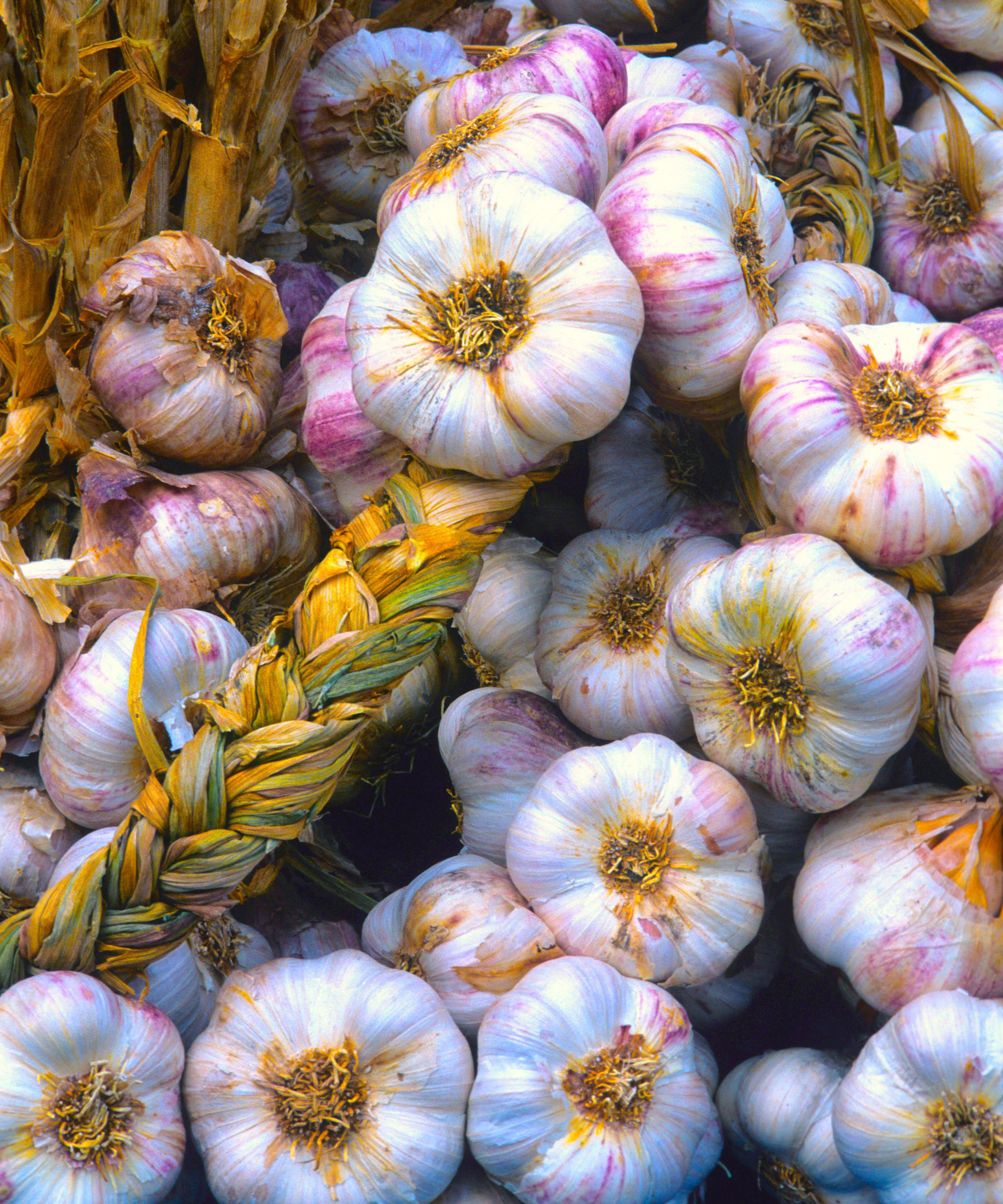
Unless you’re an allium-phobe (that’s someone who’s afraid of garlic), there’s a strong chance garlic will be one of your key vegetables to plant in November. Gardeners have been known to make these pungent plantings in spring, but we urge you to get a head start now. Cloves need a sufficient chilling period to split and create heads – planting this month ensures this. Autumn planting also means you have a better run at healthier, bigger and more flavorful yields.
‘The extra growing time encourages a more extensive root system to form, which in turn, gives more foliage to fuel large heads,’ says Amateur Gardening's fruit and veg expert Lucy Chamberlain. The key thing to remember when learning how to grow garlic is: don’t use supermarket cloves. Order from a garden center or seed supplier to be sure yours are disease-free. Choose from hardneck or softneck types, and stick to hardier varieties planted in well-draining soil.
We recommend ‘Extra Early Wight’, ‘Picardy Wight’ and ‘Germidour’ for autumn plantings. Great companion plants for garlic include strawberries, nasturtiums, chamomile and dill. Garlic started now will mature earlier than spring counterparts – you can lift individual heads in early summer.
2. Mizuna
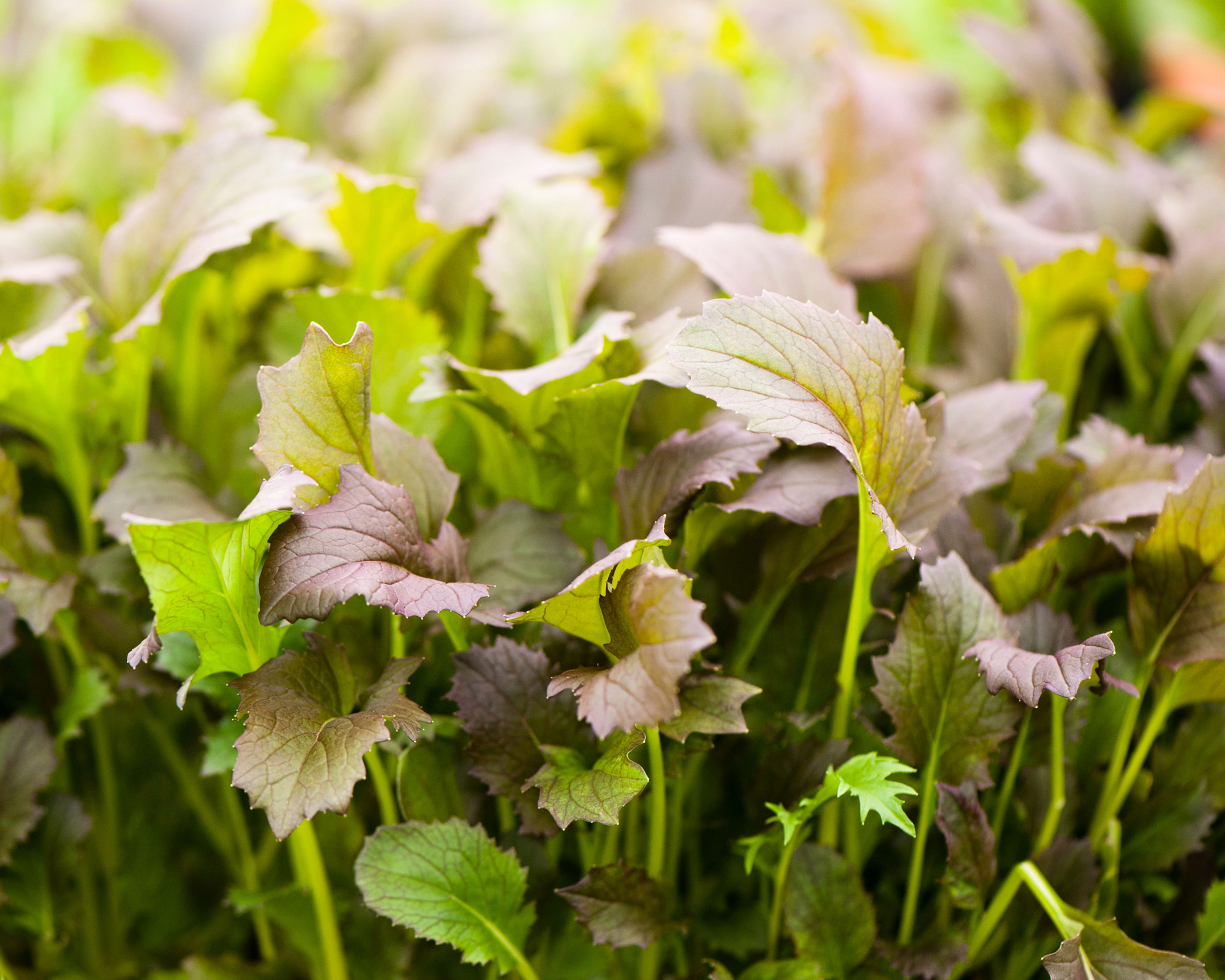
Perfectly suited to the shorter days of early winter, zingy mizuna greens are some of the most rewarding, colorful and fast-growing crops to kick off in November.
For anyone who loves growing lettuce in winter, these invigorating Japanese stalwarts are loaded with vitamins A, C and K, and perfectly at ease with the season’s challenging weather. Brassica rapa var. japonica is a refreshing firestarter that develops well in open spaces under cold frames or polytunnels, or undercover in a greenhouse border where you can readily access its peppery payload.
Translating as ‘water greens’ (and also known as spider mustard), mizuna is one of the core ‘cut and come again’ crops that hits its savory peak in 40 days but can be enjoyed as baby greens three weeks from sowing. Well suited to the diminishing light sources of winter, mizuna manages perfectly well on three or four hours of sunlight a day.
Sow in drills or pots 6in (15cm) deep, in well-draining compost or soil, then thin to 3in (8cm) spacings. Keep moderately watered to retain that zingy freshness. Pluck while young, or harvest when leaves are 4-5in (10-12cm) tall. Make sowings every three weeks for tasty pickings through to spring. Just feast on these tingly tenders before they flower, when they will become bitter.
Tangy varieties include feathery ‘Kyona’, nippy ‘Kyoto’, frost-tolerant ‘Komatsuma’ and pretty ‘Purple Mizuna’. Often partnered with mibuna to accent those peppery flavors, it also works well with rocket, spinach, green-in-snow, claytonia and tatsoi.
3. Horseradish

Homegrown horseradish (Armoracia rusticana) is a great addition to your must-grow vegetables to plant in November. It may not be the most striking looker in your kitchen garden, but it’s one of the easiest vegetables to grow – and if you find a sunny site in well-drained soil, its needs are few. As part of the same family as mustard, it is memorably pungent and helpfully adept at clearing sinuses.
Sold as bare roots (called thongs), horseradish is a rugged, cold-hardy perennial. It makes the most of this quiet time on the plot in order to get settled. Nestle the thongs horizontally in a seed tray of moist compost. Placed somewhere warm, green shoots will soon emerge from the top end.
Horseradish is a natural pest and disease repellant and makes an excellent companion plant for potatoes. Whether you prefer the common type, with its big, crinkly leaves, or 'Bohemian', which is narrower and smoother, you can be sure of a crop a year after planting.
Just one last bit of advice here: sink your horseradish plant in the ground contained within a large pot. The spreading roots of this hardy perennial will penetrate deeply and can be stubbornly persistent, so a pot will keep its invasive nature in check.
4. Spring cabbage

Often referred to as the ‘daddy of brassicas’ or the ‘king of the greens’, cabbage keeps you covered all year round and is rarely deterred by dips in weather. Because of that, you can grow cabbage even in cooler months. So, if you had the foresight to sow seed in late summer, you can plant your young cabbages out in November.
What sets spring cabbage varieties apart from others is that they tend to be leafier, looser, darker, sweeter and tender – not usually grown for the firm crunchy ‘hearts’ found later in the season. Thanks to this, they are often easier to grow and cultivate.
Great varieties include AGM ‘Advantage F1’, sweet heritage ‘Durham Early’, steely blue ‘Duncan’, compact ‘Greensleeves’ and bolt-resistant ‘April’. ‘Winter Jewel F1’ has strong disease resistance, and ‘Spring Hero’ is a newer, crispier breed. Plant in an open, sunny spot with a fertile, well-draining soil. Walk over the ground to firm in as this helps to anchor your cabbages. Once transplanted, these leafy beasts work well as companion planting partners with beetroot to benefit flavors. Spring cabbage also grows well alongside onions and celery to deter pests, and you can intercrop with fast-maturing chives and lettuce later, as space permits.
Main crops are ready to harvest from early March. Cut through the stem with a sharp knife just above ground level once they’ve developed a good sized head. You can also enjoy smaller greens before the main head develops. For a bonus crop, cut a cross in the stump and you’ll get several smaller cabbages weeks later.
- Buy spring cabbage seeds in the US: view at Amazon
- Buy spring cabbage seeds in the UK: view at Suttons
5. Purple basil
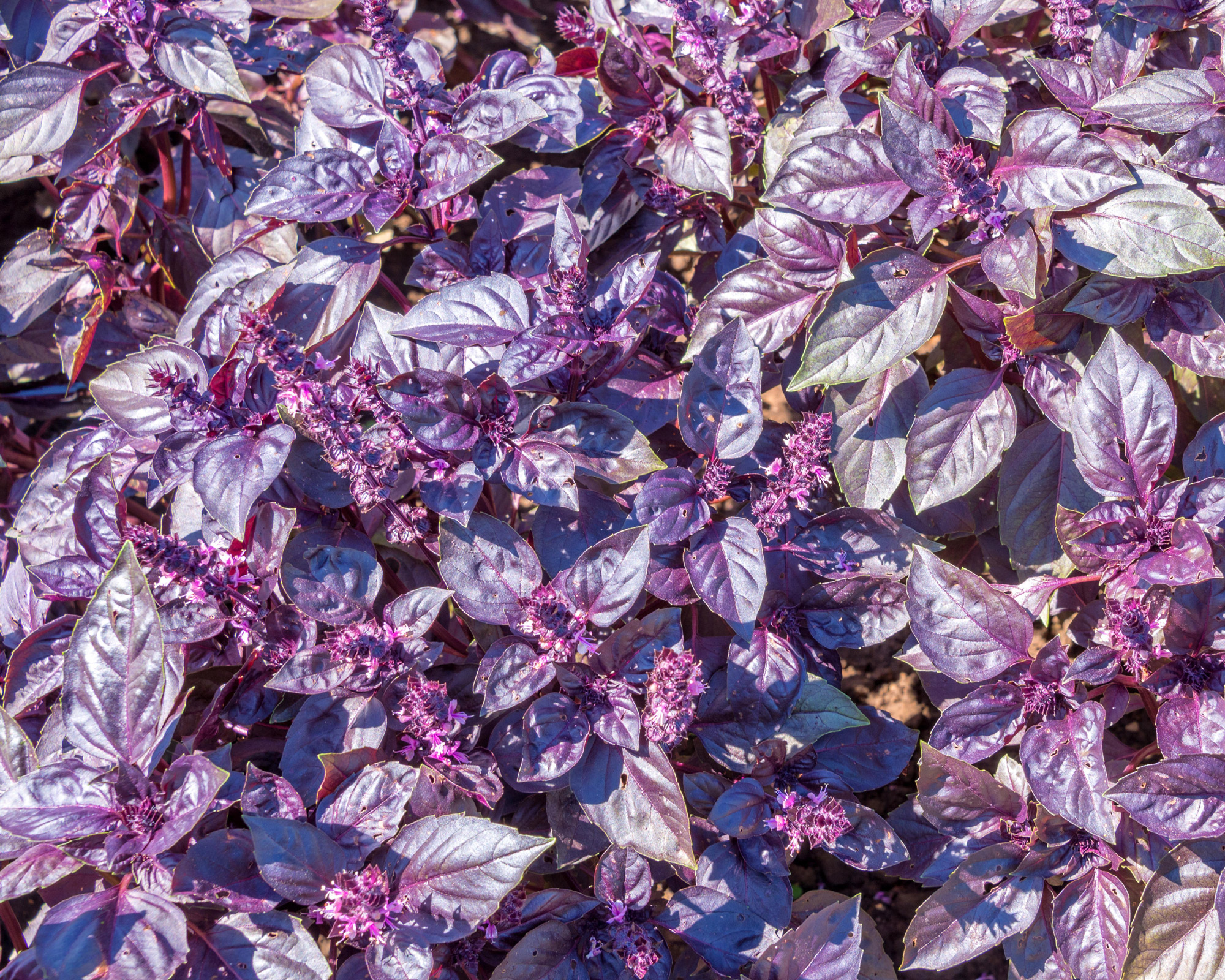
You're no doubt familiar with the more traditional basils and have delighted in their bright, fresh green colors and cupped leaves. But if you’re looking for new vegetables to plant in November and you fancy finding out how to grow basil, why not broaden your horizons with some mauve-colored marvels instead?
Our top recommendation for newbies is ‘Dark Opal’, an intensely aromatic and glossy purple-black beauty, loaded with vitamins. It also produces pretty pink flowers in summer (pinch these back while you are growing the leaves for culinary purposes).
Sow indoors and keep as warm as you can. In summer, it will enjoy life outside in raised garden beds or a large container with spinach or tomatoes. Put near outdoor seating to deter mosquitoes. ‘Dark Opal’ leaves have an antibacterial agent that helps to treat stinging insect bites. If you’d like to explore other purple pleasures, try the frilly ‘Purple Ruffles’, sweet ‘Red Rubin’ or container-friendly ‘Bambino Purple’.
6. Broad beans
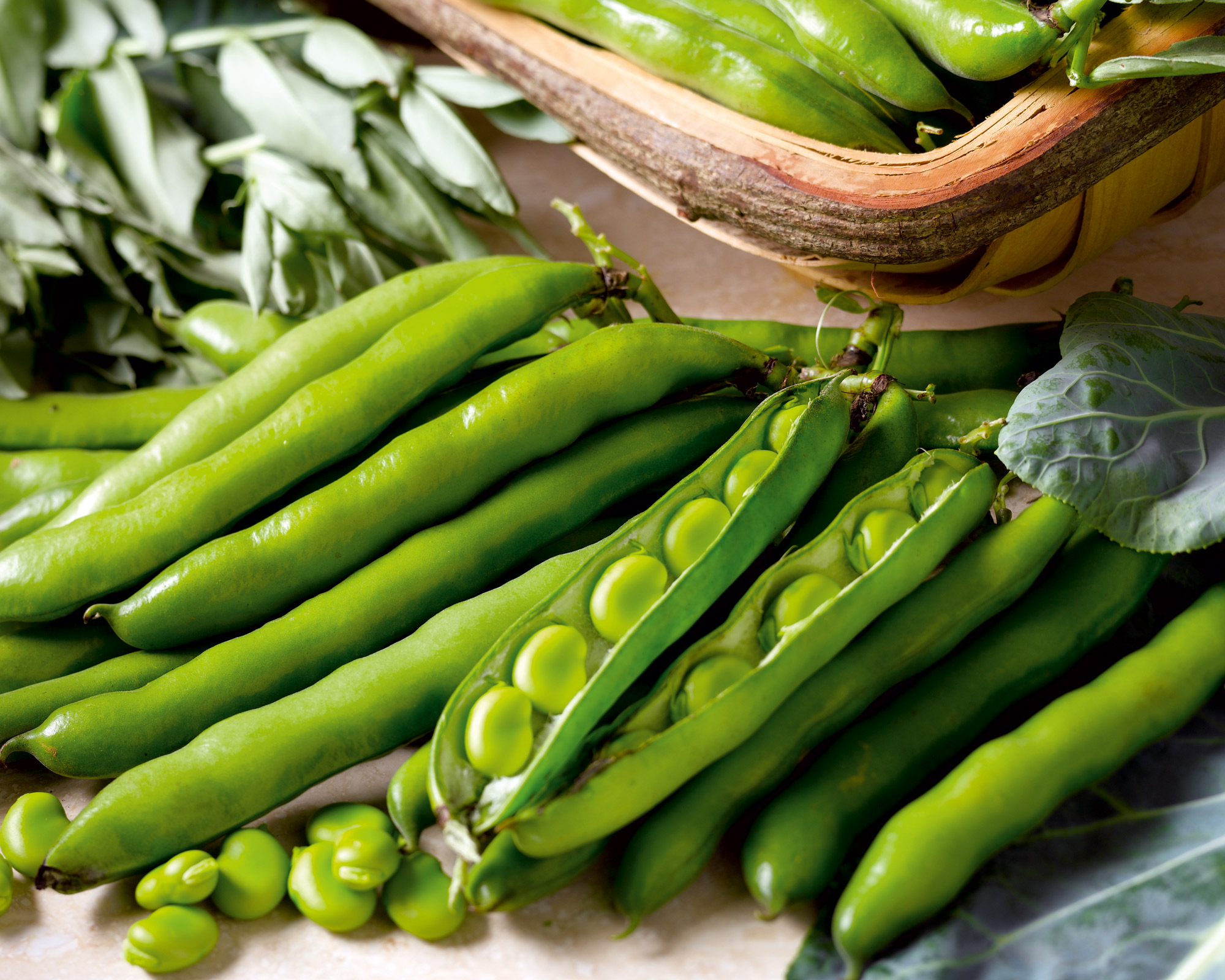
For anyone who can’t wait until spring to start off those next eagerly anticipated bundles of broad beans, the good news is you don’t have to. This bean is one of the key vegetables to plant in November, and you are encouraged to sow varieties now so they develop healthier root systems, which means more bountiful bean harvests. This month is the sweet spot for sowing winter-hardy beans: seedlings will be stronger, but compact enough to be sheltered from weather extremes.
As Chris Bonnett of Gardening Express points out: ‘Broad beans are a particularly strong sowing option for November if you live in a milder region, especially if you have well-drained soil.’ Pick your variety wisely, though, as not all are suitable for autumn sowings. As a general rule, longpod varieties are the hardiest for overwintering.
The classic broad bean variety to sow now is hardy ‘Aquadulce Claudia’: a reliable longpod that produces impressive yields from tall plants. Other excellent varieties include vigorous ‘Luz de Otono’, early-maturing ‘De Monica’, and ‘The Sutton’, perfect for containers and on exposed sites.
7. Early chilies
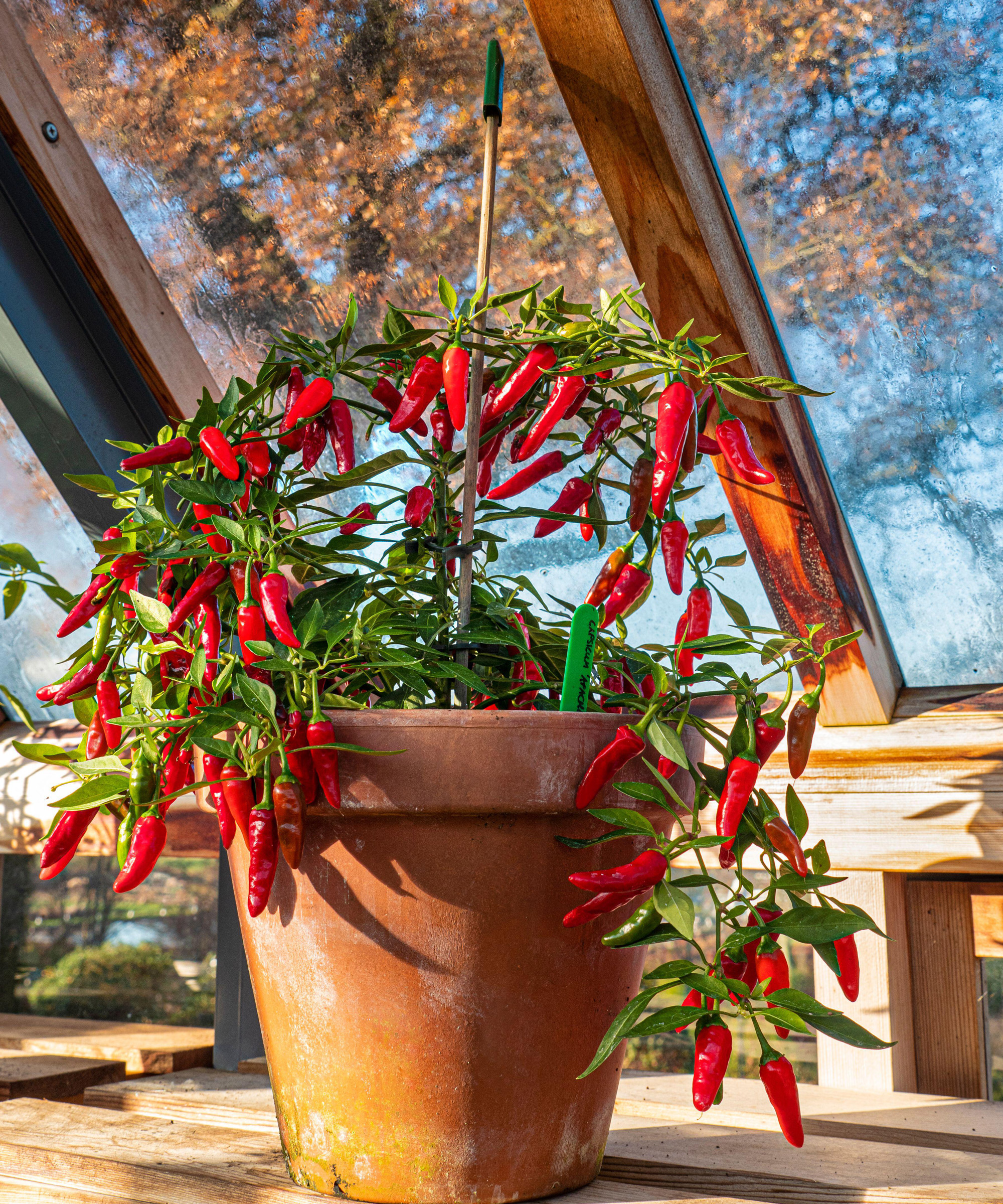
You may be thinking the only thing to do with chilies at this time of year is overwinter the healthier varieties, or stare forlornly at those that appear to be turning up their toes. While breeds like ‘Naga Viper’ and ‘Trinidad Scorpion’ will appreciate being overwintered in a warm greenhouse or conservatory in November, it is also possible to grow chilies from seed now, as long as you select the right varieties. Choose a smaller hot variety such as sweet and pretty ‘Medusa’ or tangy dwarf scarlet F1 ‘Apache’ and make sure the spot you choose has plenty of natural sunlight and warmth to ensure a long and healthy season of growth.
Early starts are recommended to develop the industrial-level levels of heat needed – and if you are looking to grow vegetables in pots, it couldn’t be simpler to start some chilis under glass in November. Growing them under cover in containers will help develop those intense kicks, and ensure you can enjoy extended harvests. Sow on the surface of small pots of seed compost, then keep these heat-seekers as warm as you can with a heated tray. Water by spraying the surface of the compost to prevent chills. Once plants are 6in (15cm) high, you can pot them on. If planting in the ground, good partners for chili include parsley, nasturtiums, basil, beans and peas.
Once they fruit, water less and ramp up the sunshine. Chilies reward a long season of care, regular warmth, patient watering and a light seaweed feed with smoky, fruity flavors. For unforgettable feel-good perennials that pack a real punch, fire up the propagator and start these scorchers off now.
8. Pea shoots

Light, fresh and loaded with nutrients, pea shoots are an absolute must if you’re looking for ideas for what to plant this month. They are some of the quickest to get out of the blocks as well – these fragrant, curly shoots are ready in weeks. Gardening enthusiasts looking to grow quick crops sow the seeds in a gutter pipe with great success – you don’t even need a garden as you can pick your harvests straight from the pipe. You can also grow pea shoots in a greenhouse or a cold frame.
If you like to grow peas for early harvests, you already know that top varieties to try include compact ‘Meteor’ and prolific ‘Feltham First’, as both have excellent winter hardiness. However, for shoots, ‘Twinkle’ is another great choice and has excellent downy mildew tolerance. If you want a quick and crispy vitamin boost, ‘Anubis’ produces shoots in three weeks, and you can enjoy a second picking a few weeks later. Partner with mint for an extra-cool seasonal winter salad combo.
9. Asparagus
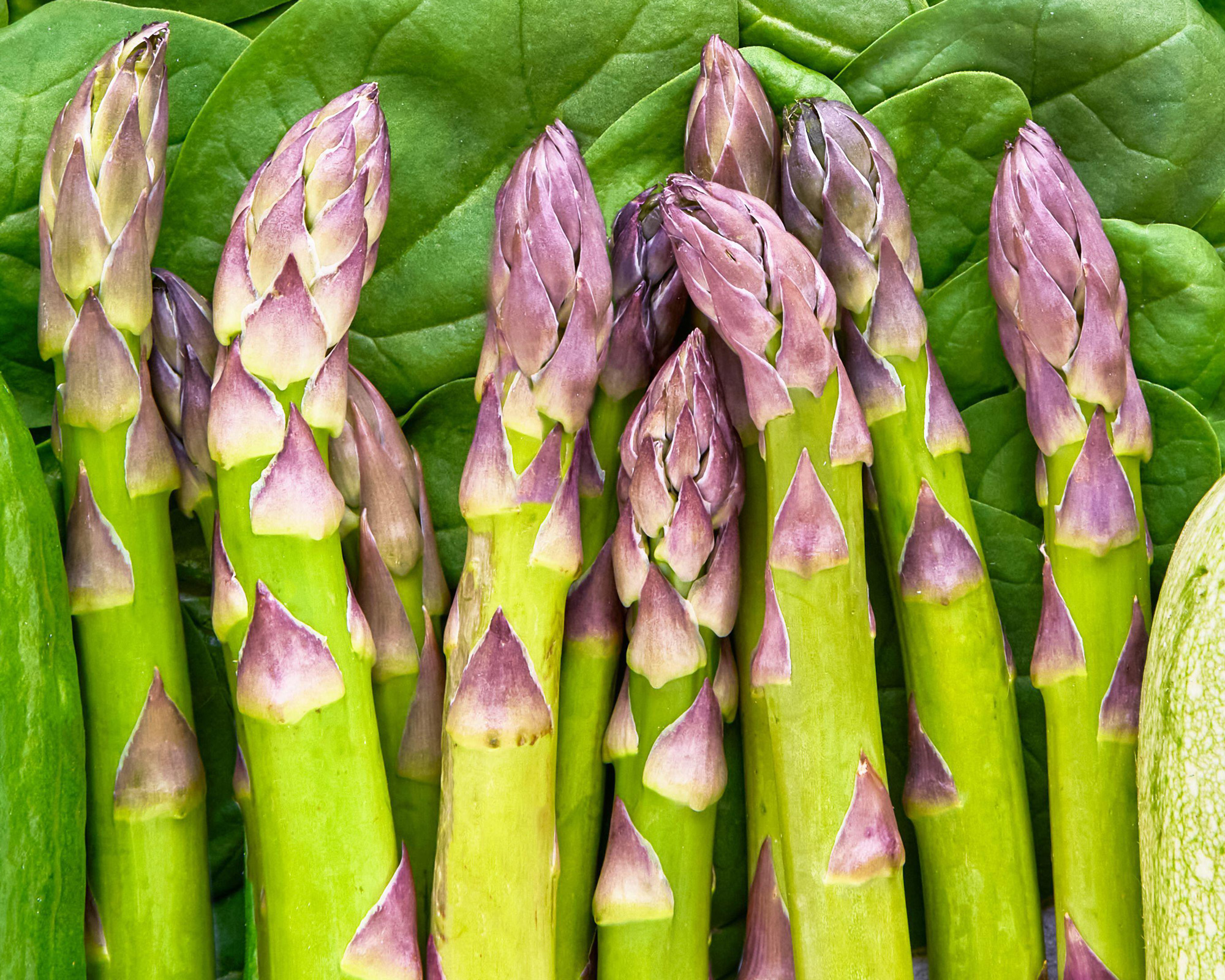
They say all good things come to those who wait, and they don’t come much better than the mighty asparagus. There’s something rather special about knowing how to grow asparagus, making this delicacy a heavyweight in our rundown. This point in the calendar is best for planting one-year-old dormant crowns in light, well-drained soils. You may have to wait two years for those tender spears, but it's worth it!
There are lots of mouth-watering varieties to try. ‘Gijnlim’ is a pretty AGM cropper with bright green spears and deep purple tips, while ‘Pacific Purple’ is a vibrant, tender beauty, loaded with antioxidants. ‘Guelph Millennium’ is reliable in most soils and highly cold-tolerant. Heavy cropper ‘Jersey Knight’ is resistant to crown rot, rust and fusarium wilt, and ‘Mondeo’ is an all-male hybrid with excellent disease resistance.
Harvesting lasts for four weeks the first time, but in subsequent years the harvest window goes up to eight weeks, guaranteeing a feast fit for the homegrowing king. Once the harvest window closes, treat the ground to a mulching and let plants rest until these succulent beauties rise again.
10. Beef and onion plant
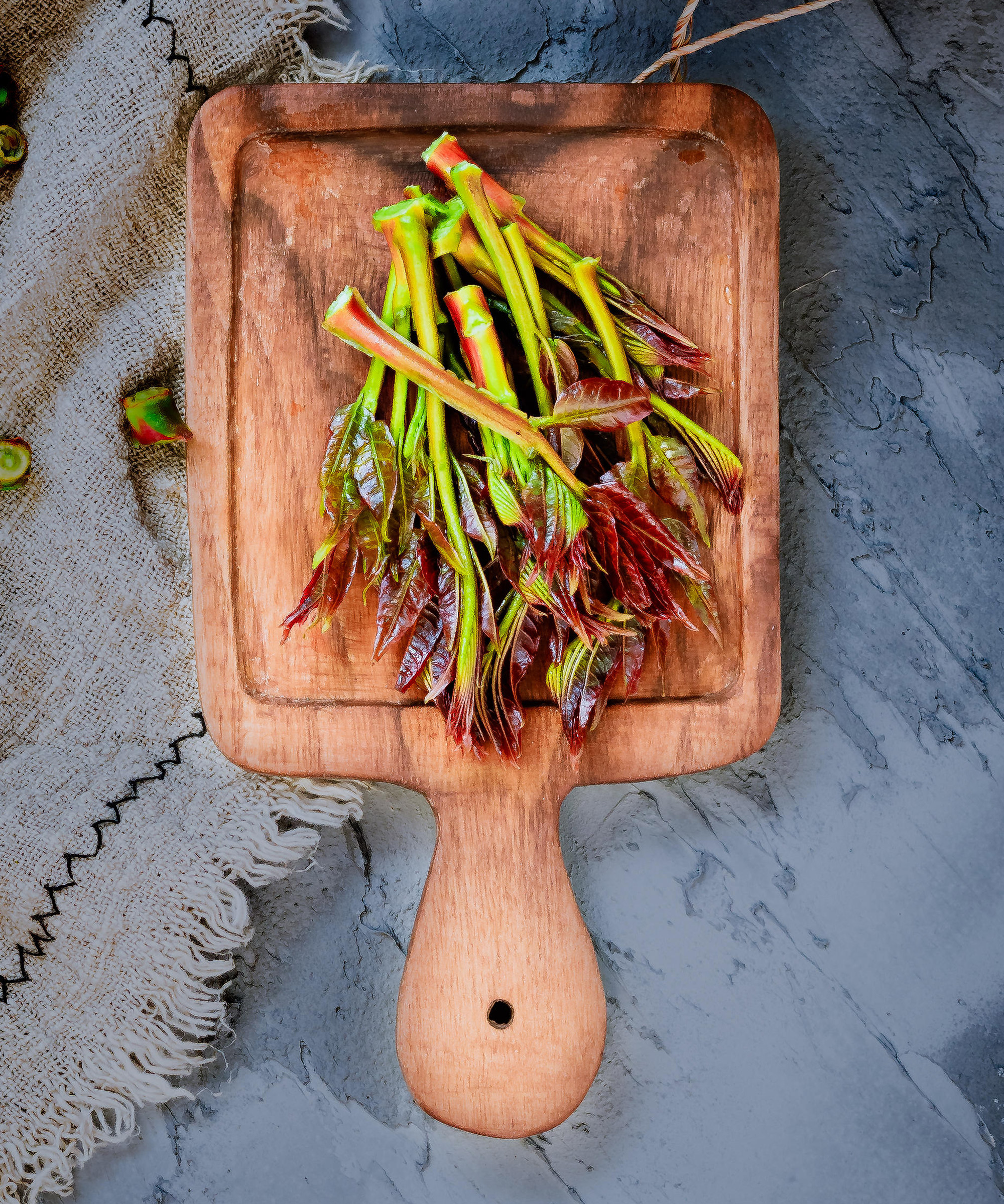
It’s not often we get to sing the praises of a plant with leaves that taste of beef and onion crisps – but here it is! The Chinese Toon Tree (Toona sinensis) is a type of mahogany tree and sounds like the sort of thing that might take decades to cultivate. However, this plant can be grown as a baby leaf veg, so you can enjoy its flavors surprisingly quickly.
The beef and onion plant develops soft, savory leaves that work well in salads, so if you grow lettuce, this is the perfect accompaniment. This beefy charmer works well in chargrilled dishes as well as a garnish for meats. It can be parboiled or stir-fried, and is a popular crop in southeast Asian dishes.
Plants can be grown on if given winter protection for the first two years. New growth can be harvested each spring. And who knows, with enough time you might wind up with a beautiful ornamental tree.
11. Oyster plant
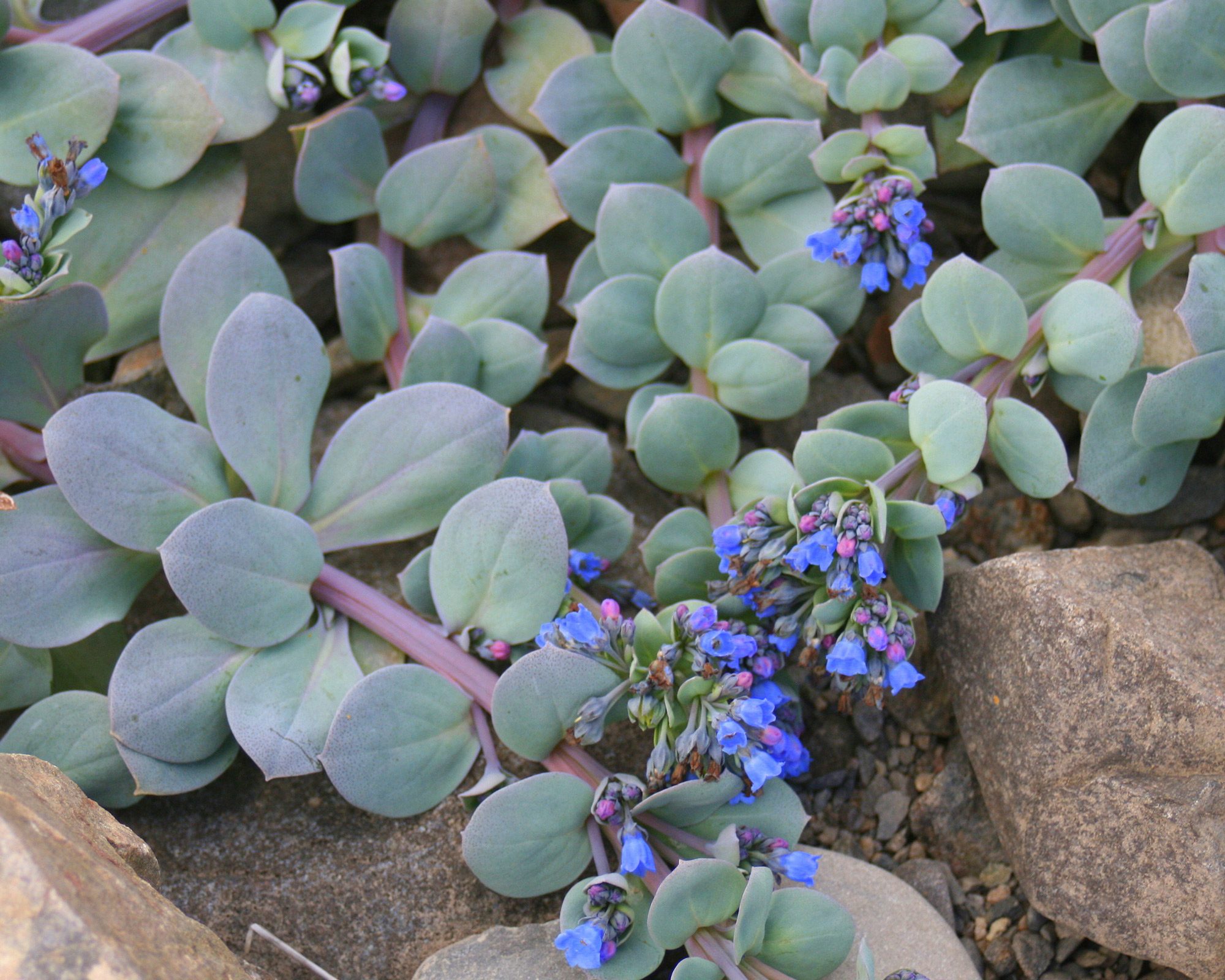
Also known as ‘sea mertensia’ or ‘sea bluebells’, this addition to our best vegetables to grow in November has long been found growing wild in seaside spots around the UK. It is one of the best coastal plants to grow, and is also one of the prettiest plants for rockeries if you have space. However, it is now gaining ground as a gourmet accompaniment to fish dishes and is heavenly eaten raw or cooked.
With its delightfully salty, earthy tasting and fleshy blue-green leaves, the oyster plant (Mertensia maritima) is often called the ‘vegetarian’s oyster’. It is ideally suited to sandy, well-drained soils in partial sunshine. Sow into gritty compost in small pots and grow in a cold frame through winter. When they are large enough to handle, pot up into 6in (15cm) pots. Oyster plants don’t like being moved much, so bear this in mind and take care when transplanting in spring.
Harvest your vegetarian oyster in the morning, when the leaves are at their most fragrant. Make sure you don’t harvest more than half the leaves as the plant needs a certain number to keep growing.
12. Mushrooms
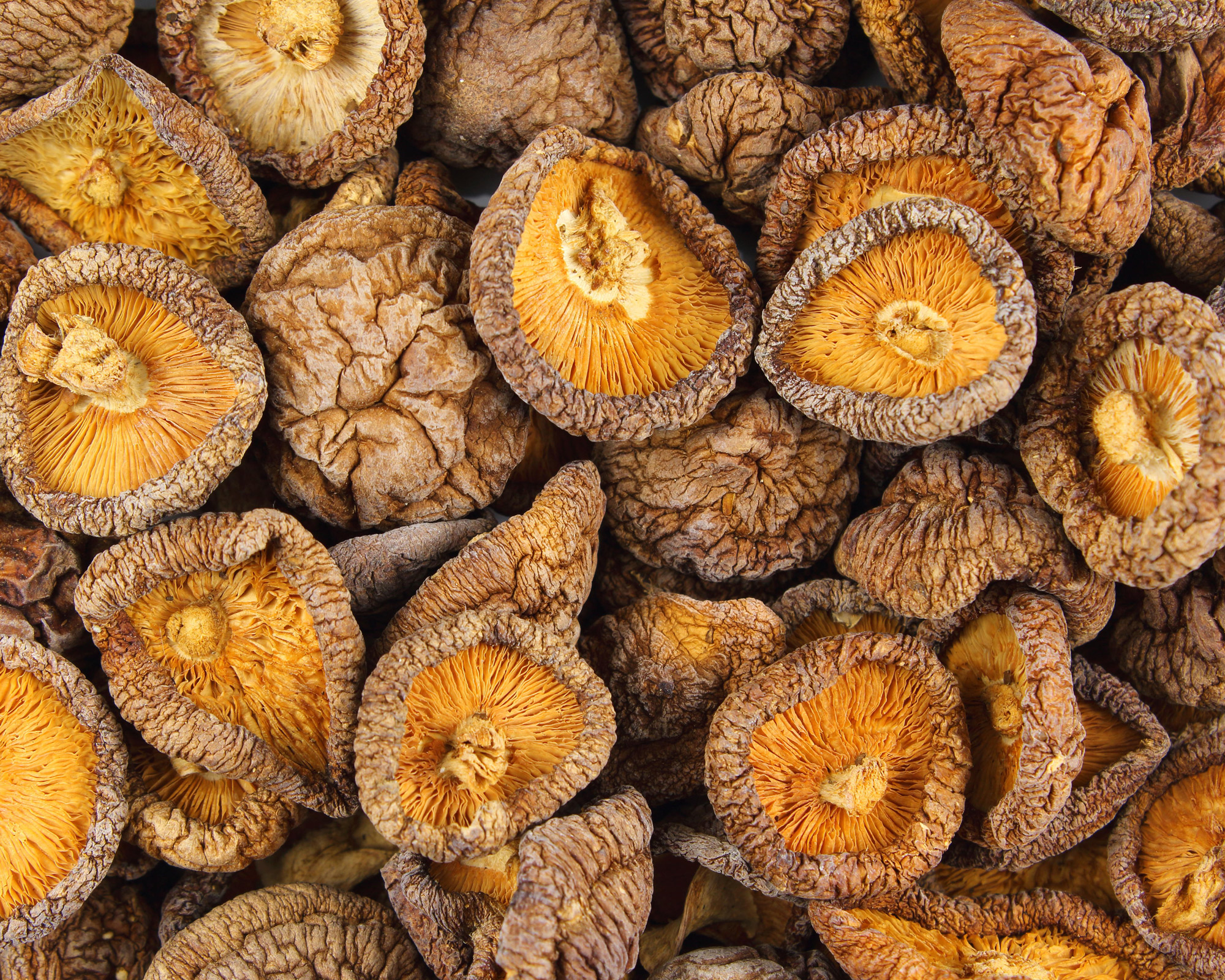
Mushrooms are a natural choice for the damper, darker nights of the season. These shade-loving plants thrive in situations and weather patterns that would flatten other plants at the tail end of the year. And you can enjoy a feast of fungi safely and easily, whether you want homegrown chestnuts, buttons, oysters or shiitakes on your chopping board.
Home-growing kits have made it possible to produce your own fleshy treats on compost, logs, straw, coffee grounds and even paperback books (one you’re not bothered about hanging on to, that is!). If you’d like to take the plunge and learn how to grow mushrooms, it’s worth playing with different growing methods. Inoculated kits can yield at four weeks, while logs may take a few months to bear a harvest.
Oyster mushrooms grown on paper and straw are a great entry-level option. Soak the inoculated material in water, bag it up, then wait for the white threads called mycelia to grow. Remove the bag, mist to keep it moist, and your mushroom bounty will quickly balloon into life.
What else can I do on the vegetable plot in November?
- November is a good time to protect potted bay trees. This is especially important if they have been trained with a ‘lollipop’ shape, as exposed stems can be damaged by frost. If you are growing fruit in pots, you will know it is wise to move the likes of citrus plants to a sheltered spot, and this is true of bay trees. Lag the stems in bubble plastic and raise the base with pot feet so water drains away, preventing frost cracking pots.
- If you grow figs, you'll know that these hardy heat-loving plants may need a bit of help late in the fall to ensure good harvests next year. If you are growing them as a fan against a sunny south- or west-facing wall, this minimizes exposure to chills and deep shade. However, trees in pots can be placed somewhere frost-free for winter. This means that you will see earlier and often prolonged harvests next year.
- It’s never too soon to think ahead to next year’s climbing crops. One of the best ways to get prepared is to stock up on tall, whippy stems that can be used as supports for peas and beans, as well as for building frames for brassicas. If you are after climbing plant support ideas then hazel and birch can work a treat. Cut as many bare, uniform lengths as you can and store them now to keep them at their best.
- Lift and divide rhubarb during dormancy to ensure you keep plants at their best. Healthy clumps yield for years, so if you are growing rhubarb check for congestion (look out for thin stems or flower spikes). Discard rotten roots and congested central parts of the clump, retaining the outer sections. Slice the clumps into divisions. Replant at the same depth as before in a new site, improved with plenty of organic matter.
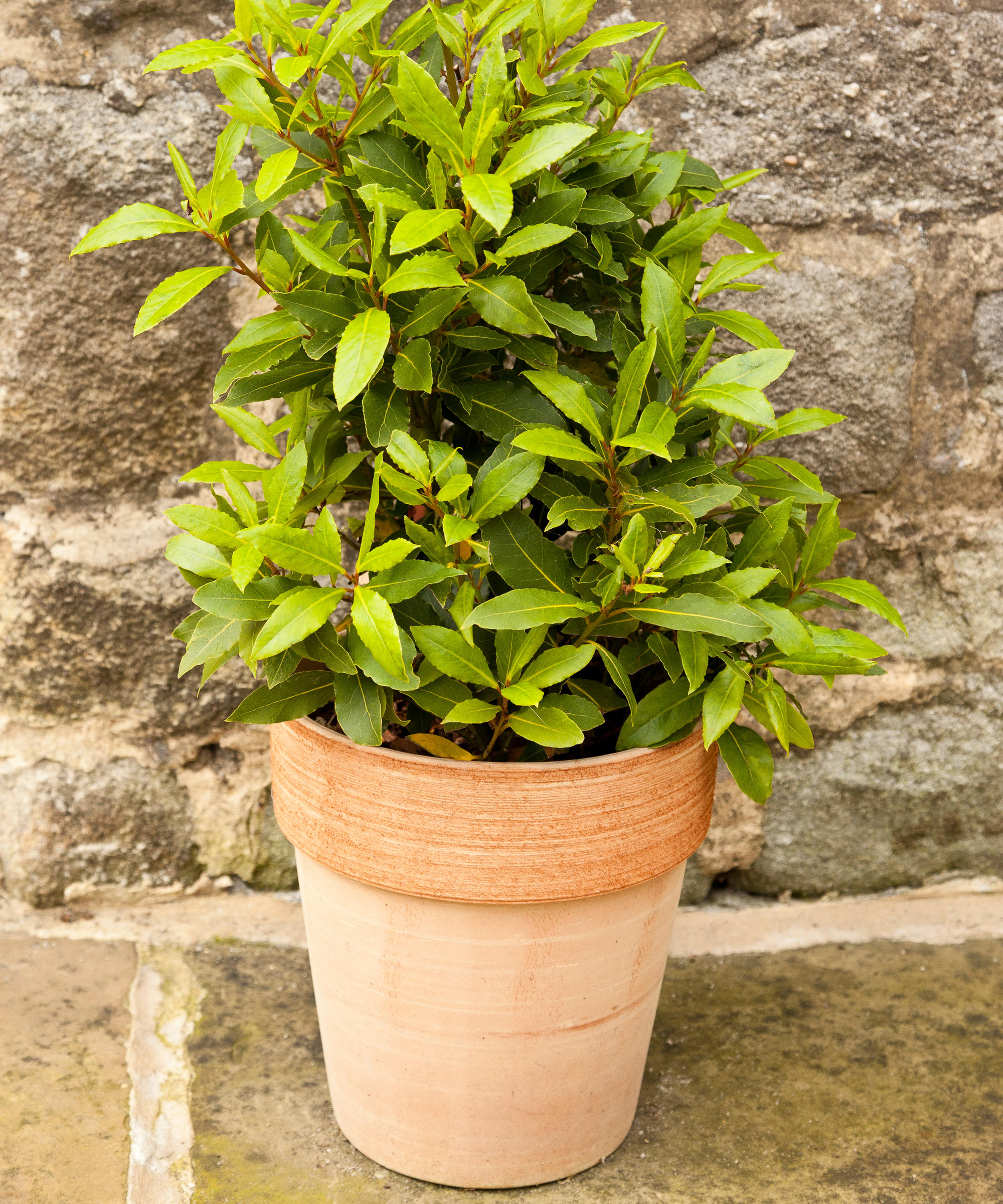

As assistant editor of Amateur Gardening magazine, Janey's gardening passion was fostered from an early age, when her amazing mum had her deadheading hydrangeas, mulching roses, and propagating strawberry plants from runners for school open days. She's also taken part in lots of conservation and rewilding projects for the RHS and TCV as a way of exploring her horticultural horizons.
